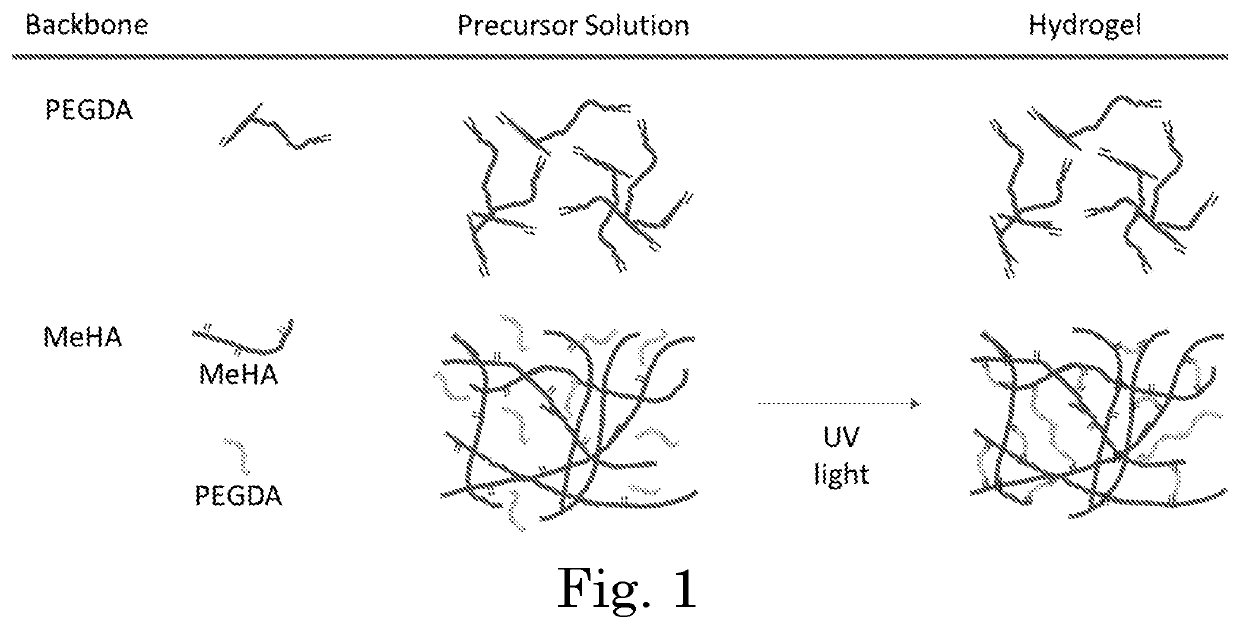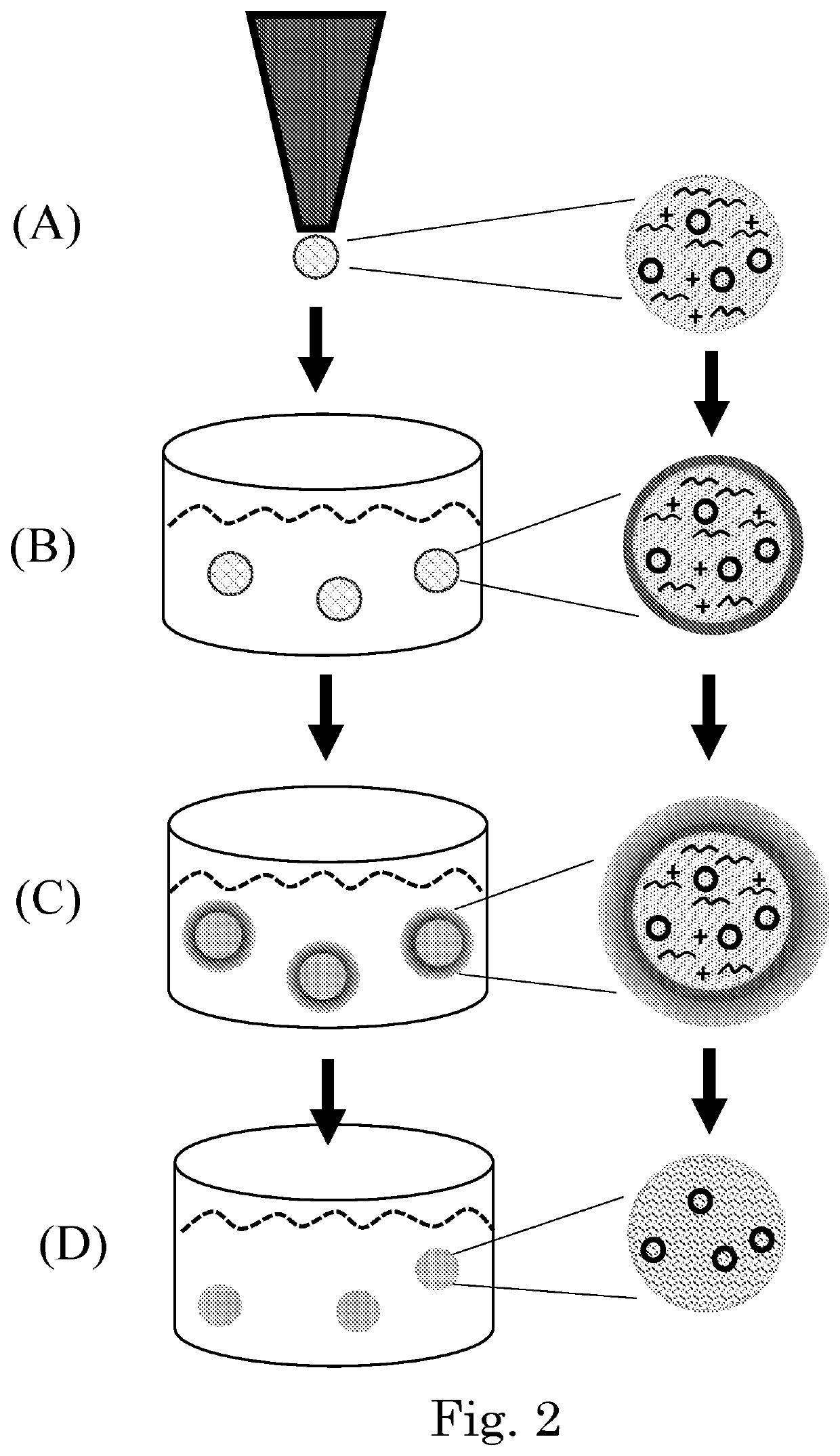Tunable degradation in hydrogel microparticles
- Summary
- Abstract
- Description
- Claims
- Application Information
AI Technical Summary
Benefits of technology
Problems solved by technology
Method used
Image
Examples
example 1
Physical and Chemical Differences in Durable Versus Degradable Hydrogel Microparticle Final Product
Introduction
[0077]The concept of cell encapsulation was first popularized in 1980 by Lim and Sun, who showed that islets embedded in alginate hydrogel microparticles could reverse diabetes in rats without the need for immunosuppression, albeit for only a few weeks. This initial success was followed by research aimed at better understanding and improving the process. Great progress has been made over time in this field, yet alginate microspheres continue to notoriously suffer from issues with long-term bio-incompatibility. Despite its limitations, alginate has persisted as the clear material of choice for cell encapsulation due to its unique, nearly instantaneous cross-linking kinetics, enabling straightforward fabrication of convenient, injectable microparticles.
[0078]Conversely, other hydrogels typically can only be prepared as bulk, macroscopic structures due to slower cross-linking ...
example 2
Stability of Durable and Quick-Degrading Hydrogel Microparticles Final Product
Introduction
[0104]The description of durable versus a quick-degrading hydrogel microparticle is dependent on the stability of the physical composition of the microparticles. Both in vitro and in vivo stability studies were conducted to determine whether there was a difference between three formulations (PEGDA, MeHA, and AHA). While the CSS process provides for detailed tuning of the hydrogels to degrade at different rates, the following provides an example of two durable hydrogels, which could last months to years versus a more quickly degrading hydrogel.
Methods
[0105]For MeHA, PEGDA, and AHA, 1.000 gram of hydrated microparticles were collected then placed in a degradation buffer consisting of 10 mM HEPES buffered phosphate buffered saline with 1% gentamycin. The degradation solution was maintained at pH 7.3+ / −0.10. Microparticles in solution were stored at 37° C. for 1, 3, and 6...
example 3
In-Bead Proliferation of Durable Versus Quick-Degrading Microparticle End Products
Introduction
[0123]The manipulation of the physical and chemical properties of cell encapsulants has become a powerful tool for tissue engineering research in vitro. It is known that the mechanical and chemical properties of the microenvironment alter the behavior of a variety of cell types, but most notably stem cells are influenced by the mechanical properties surrounding the cells. The ability of stem cells to continue to proliferate within a hydrogel is an important characteristic for therapeutic treatment of soft tissue defects due to trauma or secondary to surgical interventions. For example, muscle or skin trauma would benefit from locally delivered microbeads with proliferating stem cells. This would result in a smaller dose of microparticles, because the cell numbers would continue to increase while in the microparticle. However, not all hydrogels allow cells to proliferate within the micropart...
PUM
| Property | Measurement | Unit |
|---|---|---|
| Temperature | aaaaa | aaaaa |
| Fraction | aaaaa | aaaaa |
| Time | aaaaa | aaaaa |
Abstract
Description
Claims
Application Information
 Login to View More
Login to View More - R&D
- Intellectual Property
- Life Sciences
- Materials
- Tech Scout
- Unparalleled Data Quality
- Higher Quality Content
- 60% Fewer Hallucinations
Browse by: Latest US Patents, China's latest patents, Technical Efficacy Thesaurus, Application Domain, Technology Topic, Popular Technical Reports.
© 2025 PatSnap. All rights reserved.Legal|Privacy policy|Modern Slavery Act Transparency Statement|Sitemap|About US| Contact US: help@patsnap.com



